Persuasive Techniques & Critical Thinking
I’ve taught persuasive techniques every year, but it feels more necessary than ever for our students to develop media literacy. Can they judge the worth (and truth) of the information presented to them? Can they identify how a speaker could be manipulating their emotions and instincts?
I’ve teamed up with a group of teacher-authors from TeachersPayTeachers to share free resources for teaching in this tough climate. We know that our students are hearing messages of hate and division after the election, so we need to come together to counter that with messages of peace and unity. Also, more than ever, we need to equip our students with the skills to identify and analyze persuasive techniques used in the media.
Here are some activities for helping students develop an awareness of persuasive techniques. You can use these to start a larger conversation about being an informed viewer (and citizen!) in today’s political climate.
-
Introduction to Rhetoric
Use this activity to introduce (or refresh) ethos, logos, and pathos. Students watch two videos and complete a Doodle Notes worksheet, eventually synthesizing the concepts. This activity can be found free in my TeachersPayTeachers store.
-
“Buy My Pencil”
In this activity, students try to convince each other to buy a pencil. They will employ a variety of persuasive techniques, even if they do not yet have the names for all of them. This is because students absorb persuasion constantly, and demonstrate various techniques on a hunch. After a few minutes of letting them try to sell a partner their pencil, call students back together and have them describe the techniques they used.
-
Introduction to Persuasive Techniques
This interactive PowerPoint will help students put names to the techniques they’ve grown up hearing and using. Students will be able to identify techniques in context and apply their knowledge of ethos, logos, and pathos.
-
Commercial Analysis
Lastly, my students really enjoy applying their new knowledge to commercials!
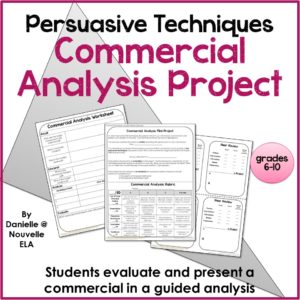
Students choose a commercial, and then follow this step-by-step analysis of persuasive techniques. They can complete this alone or in pairs, and can present in small groups. Students also practice giving peer feedback, which is a way to extend their critical thinking. Show them what constructive feedback versus “empty” feedback looks like. This is a great activity for small group presentations.
For an added bonus, let them show the commercials in class. (Hint: You can find a top-ten list by the end of the night and limit them to school-appropriate commercials)
Persuasive Techniques are a great way to get students engaged and thinking. You can help develop their media literacy and challenge them to consider the incoming messages.
What are your favorite activities for teaching persuasive techniques?
Be sure to check out #kindnessnation and #weholdthesetruths to find more great resources on TeachersPayTeachers! You can also check out the rest of the amazing participants at Secondary Smorgasbord:

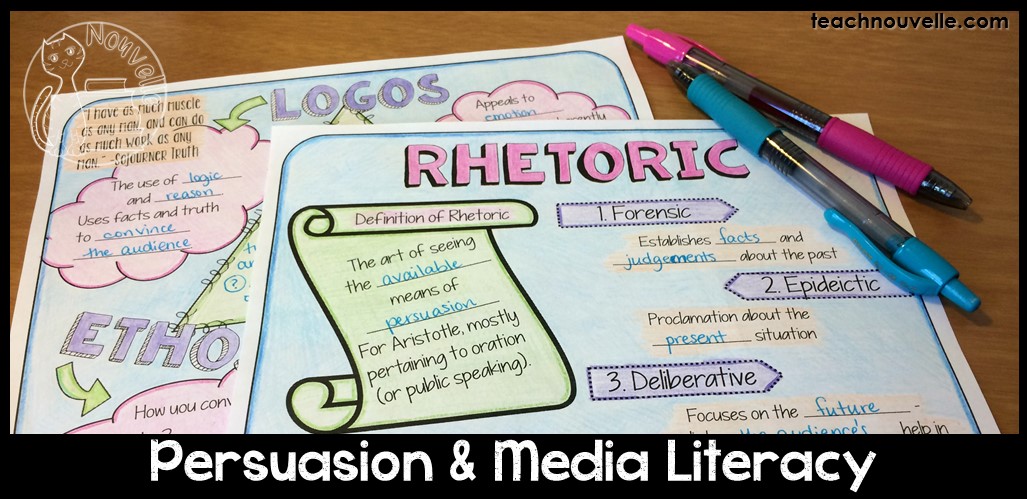
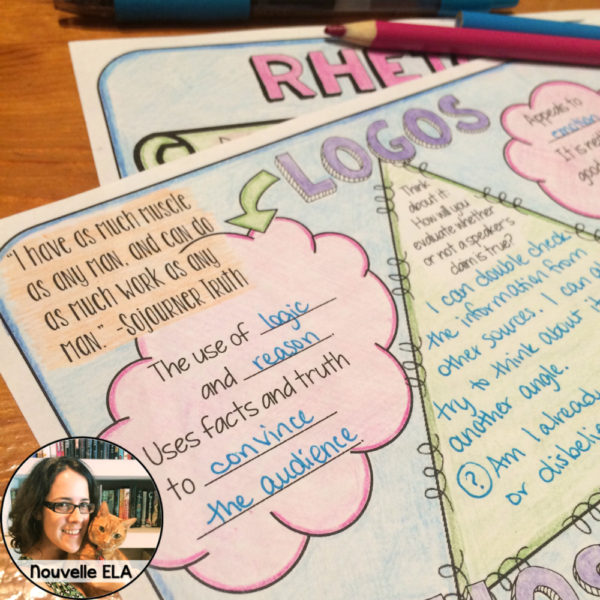

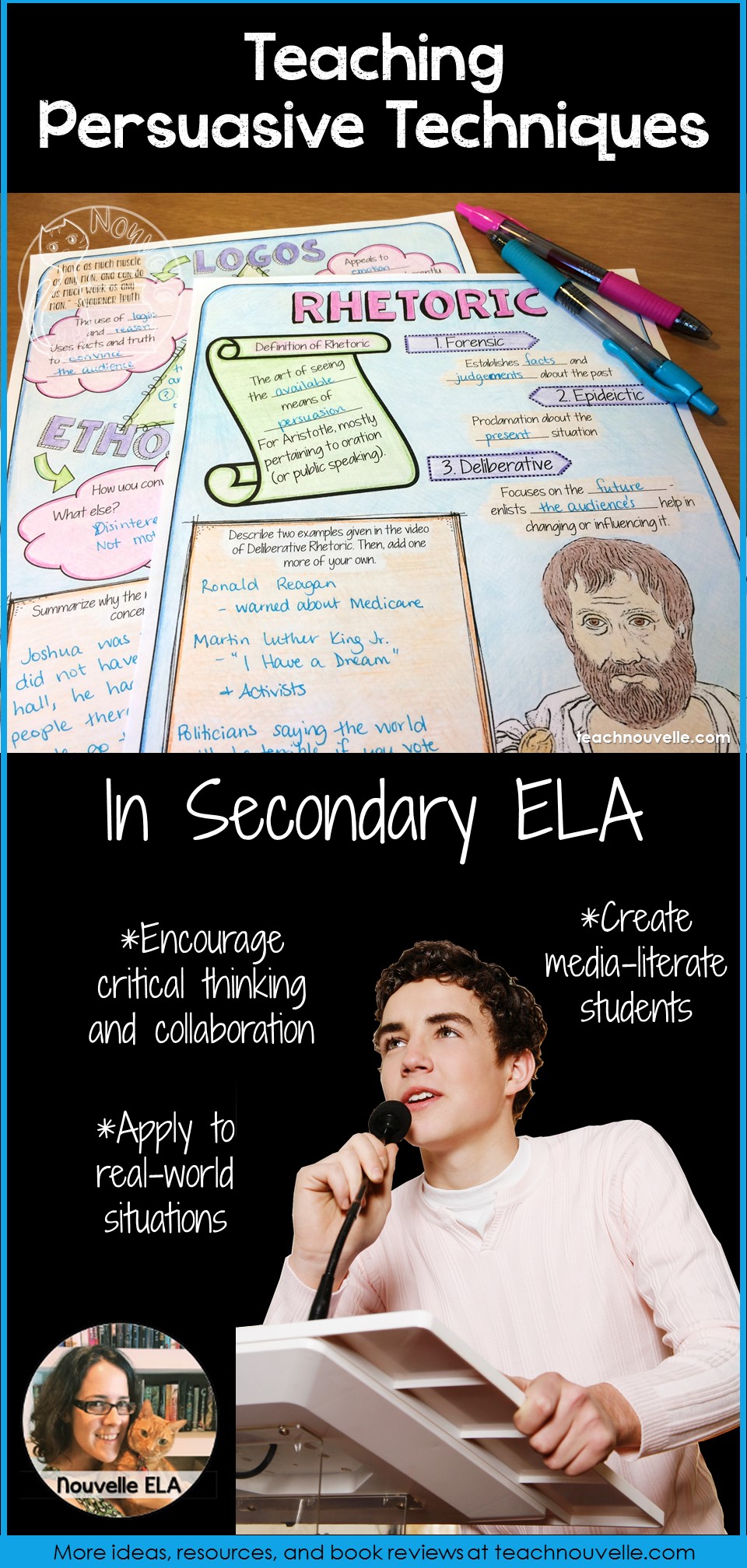


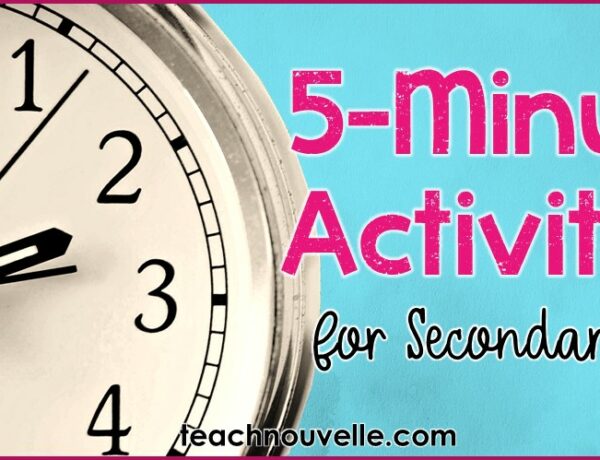
11 Comments
Amy Brown
January 20, 2017 at 9:24 amGreat activity and perfect for the #kindnessnation event. Thanks so much!
Michele
January 20, 2017 at 10:24 amSo many adults do not understand how to identify rhetoric, so this is such a valuable lesson for our students. Thank you so much for sharing!
Jackie
January 20, 2017 at 11:14 amI love teaching students to use rhetoric and these activities will definitely going in my toolbox. Thanks so much for sharing!
Jill Christensen
January 20, 2017 at 12:41 pmI love this! My favorite part is analyzing commercials. That is SO important! Thank you for creating and sharing this amazing resource!
Leah Cleary
January 20, 2017 at 6:19 pmRecognizing persuasive techniques is so important. These are wonderful activities. Very nicely done–thanks so much!
Stephanie Icenogle
January 20, 2017 at 7:27 pmThank you for sharing such awesome ideas in this blog post, Danielle! This sounds like such a fun way to introduce persuasive techniques to your students. I will definitely be sharing this blog post with my ELA teacher friends!
The Daring English Teacher
January 21, 2017 at 9:08 amTalk about perfect timing. I’m starting my rhetoric unit with my sophomores next week. These will be a great addition. Thank you.
Kim@OCBeachTeacher
January 21, 2017 at 3:24 pmSo many great ideas that will help me teach rhetorical analysis. I think my students will love the “buy my pencil” activity!
Lisa at Mrs. Spangler in the Middle
January 21, 2017 at 6:02 pmThis is perfect timing for me too! I’m teaching argument writing and my sixth graders are learning about logos and pathos. Thank you!
Susan at The ESL Nexus
January 21, 2017 at 11:46 pmStudents need to know this material and these materials will really help them understand these concepts. I really like your idea of analyzing Super Bowl commercials!
Teaching Argumentative Writing with Adam Ruins Everything - Nouvelle ELA Teaching Resources
February 26, 2019 at 7:03 am[…] it down. Their eyes glaze over when you say the word “rhetoric”. I’ve talked before about teaching media literacy and even linked to my free Rhetoric Sketch & Learn activity, but what happens after […]